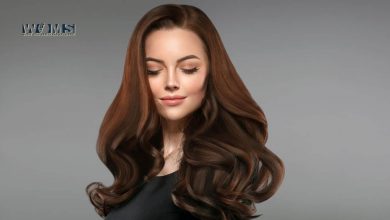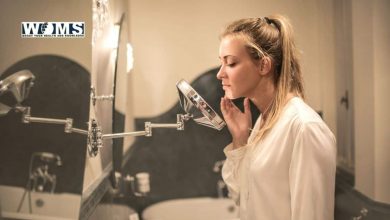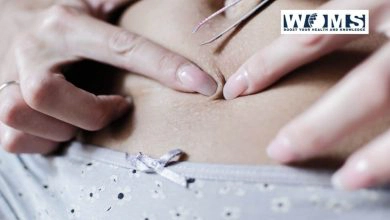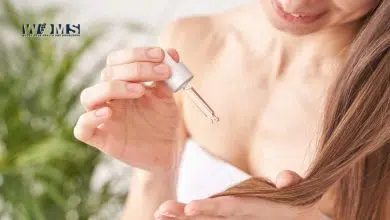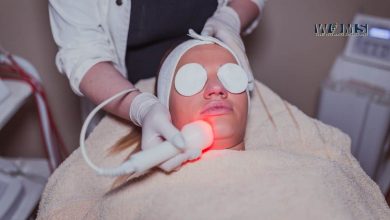Understanding and Managing Pimple Nose: Types, Causes, and Treatment
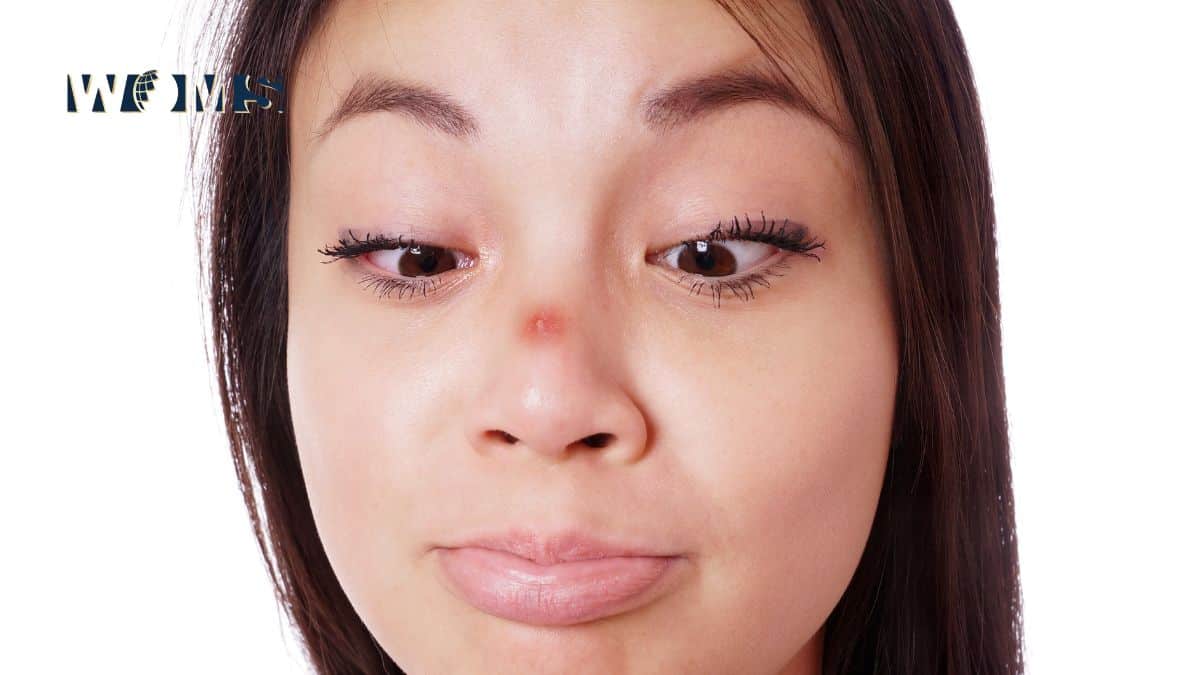
The nose is an important cartilaginous structure of our body. Being sensitive, the nose is more prone to acne and bumps. The nose contains larger pores that can be clogged with dust and bacterial growth. These clogged pores may lead to bacterial acne or red bumps that may appear as cysts. These pimples can be present inside or outside the nose. A pimple nose also indicates a sign of active infection.
It is important to understand the basic difference to learn how to manage infected acne. Moreover, it is also important to reduce the chances of worsening infection. This article covers all aspects of the pimple nose and related details. In addition, this article will also provide you with details regarding the management of the pimple nose.
What are the common types of pimple nose?
Pimples on the nose may be of two types. These two types of acne may be because of different reasons. Let us elaborate on the common types of pimple nose.
There are two types of pimple nose. These are as follows:
- Acne vulgaris
- Acne rosacea
It is quite difficult to differentiate between these two basic types because of similar symptoms. Acne vulgaris is because of regular pimples, cysts, or blackheads on the outer surface of the nose. Acne rosacea is basically a type of rosacea. It is possible to have both types of acne at the same time. But, you yourself can differentiate the types of acne by properly assessing the nose skin.
Acne vulgaris usually involves the clogged larger pores of the nose skin. This type of acne can present as
- Blackheads
- Whiteheads
- Pus-filled acne
Larger pores can be clogged up to the deeper layers of the skin. These deeply clogged pores can convert into cysts and pustules. It is quite painful and tender to touch.
Acne rosacea is in the form of extreme redness and generalized swelling around the nose. These prime symptoms can spread to the nearby surfaces of the skin, involving your face and cheeks. Swelling may make your nose feel plumped or edematic. Moreover, pimples can also appear on the flushed surface of the nose. This was about the types of pimple nose.
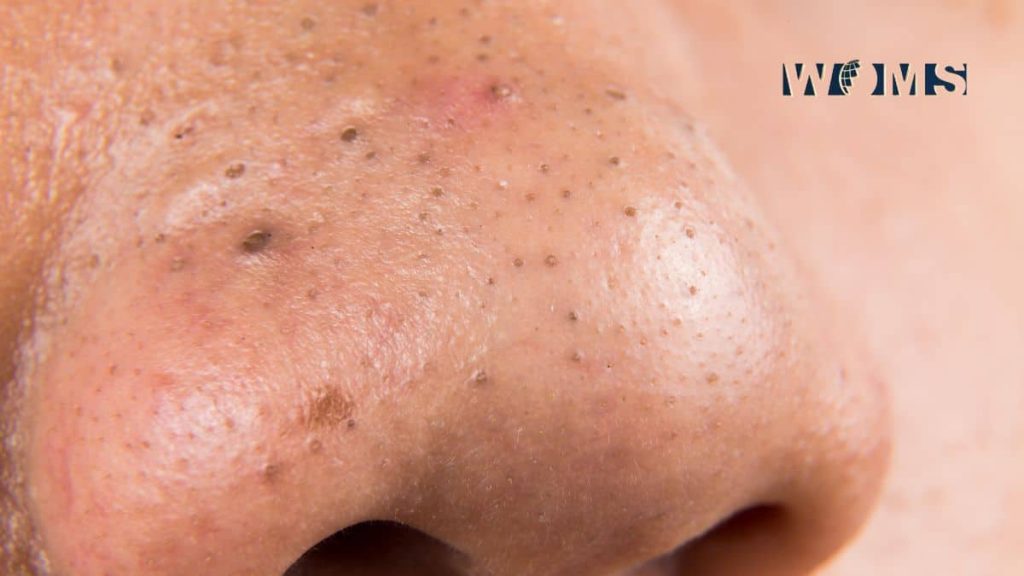
What are the common causes of pimple nose?
Once you have known the type of pimple nose, you will better be able to understand the causes of acne. Here is a detailed discussion of the causes of different kinds of pimple nose.
If you want to know about pimples that occur in lips, you can read this detailed article on Lip pimples.
Causes of acne vulgaris
Acne vulgaris is mainly because of clogged pores. Normally, pores are filled with sebaceous glands that deliver sebum to make your skin hydrated and shiny. But, sometimes, sebaceous glands produce excessive sebum to clog the pores. Sebum combined with dust, dead skin, or bacteria can cause acne on the nose. The nose area is vulnerable to acne because of large-sized pores. There are also some other causes that can cause acne on the nose. These are as follows:
- Acne on the front tip of the nose may indicate any digestive issue.
- Acne on the sides of the nose may indicate any hormonal imbalance.
- Removing hair or blowing the nose may cause acne inside the nose.
There are also specific conditions that can accelerate acne vulgaris. These conditions include
- Familial history of acne vulgaris
- Increased stress levels
- Hormonal imbalance
Causes of acne rosacea
Acne rosacea is not a true type of acne. It is a type of rosacea. Rosacea is a skin problem indicating a generalized swelling and redness with acne on the nose. It is mainly because of inflamed blood vessels, becoming visible on the outer surface of the skin. The resulting redness may induce acne on the surface of the nose. Acne rosacea is not true acne but it may cause acne on the nose. Researchers are still unknown of the underlying causes of acne rosacea. But, the risk factors of acne rosacea are as follows:
- Familial history of acne rosacea
- Having bright or fair skin
- Immune response to bacterium Bacillus Oleronius
- History of Helicobacter pylori (bacteria of the gut that can cause ulcers)
- Malfunctioned mechanism of protein that normally protects the skin
- Reactionary mechanism to mites that are present on the skin
What are the treatment protocols for acne vulgaris?
In acne vulgaris, there are two types of acne.
- Inflammatory acne
- Non-inflammatory acne
The treatment plan depends on the type of acne.
You can also check out these effective home remedies for pimple.
Non-inflammatory acne
Non-inflammatory acne refers to the minor acne type which involves pimples, blackheads, or whiteheads. This type of acne can be managed by home remedies. Medicated toners, cleansers, spot treatments, and creams can help you manage bacterial growth, remove excess sebum, and get rid of dead skin. Products containing benzoyl peroxide or salicylic acid are beneficial to deal with this type of acne.
Salicylic acid works to remove excess sebum and dead skin around the hair follicles. It is one of the most common types of beta hydroxy acid exfoliant. Alpha hydroxy acid exfoliants like glycolic acid can help you unclog the pores and reduce the spots on the skin. Retinoids can also help to unclog larger-sized pores of the nose.
Prescription medications are not necessary to treat non-inflammatory acne.
Inflammatory acne
Inflammatory acne is a severe type of acne. It usually presents as cysts or nodules on the surface of the nose. In this type of acne, there is usually a generalized swelling around the acne. Home remedies for acne or over-the-counter treatment plans are somehow beneficial to treat such types of acne.
Over-the-counter, pimple patches containing benzoyl peroxide can also heal pimples. It helps to reduce inflammation and acne bumps. This type of management plan is beneficial only if your acne is not recurring. In case of severe recurrent inflammatory acne, you may need to visit a dermatologist for proper management. For example, different antibiotics can help you relieve cystic or nodular acne.
Prescription retinoids that include isotretinoin can provide maximum relief because of their ability to shrink sebaceous glands. However, isotretinoin has some serious side effects. Before going for this treatment plan, you must consult your dermatologist thoroughly regarding the pros and cons of retinoids.
What are the treatment options for acne rosacea?
Rosacea is a skin-related medical problem that requires proper treatment. There are different medicines available to treat the redness and swelling caused by rosacea. Moreover, there are several other home-based remedies to manage the symptoms of acne rosacea.
Pharmaceutical management
Your doctor may suggest different medicines to treat the symptoms of acne rosacea. The most common medicines include brimonidine, containing Alphagan P to reduce swelling and redness. It works by constricting the blood vessels and improving the condition of the pimples. In addition, your doctor may also prescribe such medication that provides immediate relief for acne rosacea.
Antibiotics can also manage inflammatory acne but the results are temporary. If none of these treatment plans works, your doctor may also go for isotretinoin as a last option.
Other options to treat acne rosacea
Besides the medication, there are different other therapies to treat acne rosacea. These are as follows:
- Microdermabrasion or dermabrasion can help to get rid of dead skin cells causing acne.
- Medicines and massages that reduce stress levels can also help to reduce the inflammation underlying the skin.
- Laser therapy can also decrease the redness and swelling caused by acne rosacea.
Conclusion
A pimple nose is quite common in younger people due to multiple reasons. There are two main types of pimple nose. These include acne vulgaris and acne rosacea. Acne vulgaris is mainly because of clogged pores. Whereas, acne rosacea is a type of rosacea, that causes generalized swelling and redness. Pimples can form on the redness of the skin. This article covered all the necessary details of pimple nose and the underlying causes. Moreover, it also provides details about the management of these pimples on the nose.
If the pimple on the surface of your nose gets serious or painful, it is time to consult your doctor for management.
Frequently asked questions (FAQs)
Is a pimple on the nose a serious condition?
The nose is actually made up of cartilage. Pimples or acne on the nose may be more painful than pimples on other skin surfaces. It may cause extreme discomfort. Otherwise, it is not harmful to convert into serious problems. But, sometimes a pimple nose can indicate some serious health conditions.
How long can a pimple nose last?
Pimples on the nose usually last between three to seven days. Mostly, pimples go away on their own. Sometimes, it needs proper treatment to get rid of. Deep pimples which are quite hard to touch (pimples with no head and a quite hard feel) may take time. They may take weeks to go away.
How can a pimple nose heal quickly?
There are several ways to make pimples heal quickly. Here is a list of methods that can help you heal pimples quickly.
● Apply ice on the pimples
● Make a paste of crushed aspirin in a drop of water and apply it to the pimple.
● Use proper acne treatment prescribed by your dermatologist.
● Prioritize using makeup with salicylic acid to conceal pimples.
● Apply a proper face mask to treat pimples.
● Get a cortisone injection from your doctor to heal pimples.
